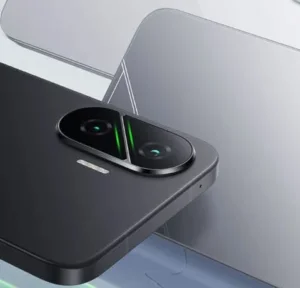Okay, let’s explore the future! It’s 2025, and chances are you’re either already living with some “smart” tech or seriously considering it. And honestly, why wouldn’t you be? Imagine a home that anticipates your needs, adjusts to your preferences, and makes your life just a little bit easier (and cooler). That’s the promise of a smart home, and a smart home setup isn’t as daunting as it might seem. So, let’s talk turkey – how do you turn your humble abode into a tech-savvy haven?
This isn’t some futuristic pipe dream anymore, folks. We’re past the “early adopter” phase.
Smart home technology is mainstream, and it’s more accessible and user-friendly than ever before. Forget complex wiring and expensive installations – we’re talking about a relatively simple process that can be tackled in stages, tailored to your needs and budget.
So, where do we start? Let’s break it down, shall we?
How to Set Up a Smart Home in 2025
Step 1: You need to set clear smart home goals along with your spending limitations.
Before you go gung-ho and buy every gizmo with a “smart” label, it’s crucial to ask yourself: What specific functions should your smart home system perform? Decide if you want your smart home to simplify your life while keeping you safe and saving energy.
Here are a few questions to ponder:
- Convenience: During Smart home setup, do you want your lights to activate automatically as you walk into a space? Your music will play automatically as you move through different rooms. Your voice-activated assistant can run your daily appointments for you.
- Security: Do you need to view your home from anywhere while receiving alerts about possible threats and seeing visitors at the door without being home?
- Energy Efficiency: You want to control your heating and cooling system smartly while monitoring your lights and energy usage to achieve better energy efficiency.
- Entertainment: Do you want to play media content without interruptions throughout your entire house? Use your voice to operate your TV and connected equipment.
After figuring out your smart home setup objectives you need to establish your spending limits. Your budget guides your selection of smart home technology because prices vary widely from basic to high-end options.
Begin your smart home journey with basics then grow your system at your own pace. Avoid feeling obligated to buy everything at once.
Step 2: Your smart home hub functions as the system’s core component.
A smart home needs its hub at the center. This device connects all your smart devices together through one network. Your hub functions as the central controller of your smart devices. There are a few main contenders in the 2025 hub space:
- Voice Assistants (Amazon Echo, Google Nest): People enjoy these products because they work with many different devices. They enable users to control devices and answer questions while playing music then act as a basic device controller. Their biggest benefit comes from simple voice control operation. New users find starting with these products easy because they simplify smart home technology.
- Dedicated Smart Home Hubs (Samsung SmartThings, Hubitat): They provide greater automation features while working with a wider selection of devices. They work best for people who need detailed control options.
- Apple HomeKit: People who love Apple products will appreciate this system’s security features and ease of use but it works only with devices that connect to Apple products.
Pick the smart home hub that aligns with your device choices and fits your preferred technology platform. You do not need to commit to all smart devices on day one because your home’s setup can develop naturally over time.
Step 3: Choosing the Right Smart Devices Marks the Start of Your Home Experience
Here’s where things get exciting! The market now offers many smart devices that compete for your attention. Our guide will focus on the main smart device types that people choose first.
Smart Lighting: Most people start their smart home setup journey by upgrading to intelligent light bulbs. Change your old lighting to smart bulbs by putting in new smart switches or smart lamps. Your device lets you turn lights on or off using voice commands or your phone while also setting them to operate at specific times.
With smart lighting technology you won’t have to walk into a dark house when you arrive home. You can find good smart lighting solutions from Philips Hue, LIFX, and Wyze.
- Smart Speakers: These are your starting points to control devices using your voice. They will control music playback while responding to your queries and adjusting connected smart devices. When selecting home assistants choose from Amazon Echo Google Nest or Apple HomePod.
- Smart Thermostats: Control your home temperature remotely while reducing power usage. Smart thermostat brands Nest, Ecobee, and Honeywell let you set temperature changes through geofencing and their systems learn how you use them to optimize energy savings. Over time this can greatly diminish energy bills.
- Smart Security Systems: Use smart cameras and security sensors throughout your home while adding a smart doorbell for better surveillance. Many homeowners use Ring Arlo and Blink when selecting video cameras for security.
You can access your home without keys and control your entry from anywhere through locks made by August and Yale. Most even have alarm systems built into them.
- Smart Plugs and Outlets: These are incredibly versatile. Connect any regular device to make it smart. Use your voice or phone commands to operate your lighting, cooling, and brewing devices. You will find dependable smart plugs through TP-Link Kasa and Wemo products.
- Smart Entertainment: You can easily control all streaming devices by linking them to your network and smart entertainment equipment. You can now run all your devices from a single smart remote control.
- Smart Kitchen Appliances: Smart kitchen appliances that cost more help you handle cooking tasks more effectively. The smart kitchen lets you start your oven before you get back and order groceries through your refrigerator.
The success of your smart home setup depends on matching devices with each other. Check that your selected devices will work properly with both your smart hub and its associated platforms. Look for the “Works with…” You can find the Works with Amazon Google and Apple badges on product packaging and websites.
Step 4: Setting Up Your Devices Begins the Transformation Process
The device installation procedure is normally simple to follow.
- Download the App: Each smart device includes its own mobile application which you must download and set up.
- Connect to Wi-Fi: Open the app instructions to set up Wi-Fi connection between your devices and your home network. You need a strong network that works without interruptions.
- Pair with Your Hub: Connect your devices to your smart hub by following the provided steps. You need to scan a special code or type in your device’s identification number during setup.
- Organize and Customize: After connection you can place your devices into defined rooms and sets to simplify your smart home experience.
- Test, Test, Test: Check all your smart home features operate properly before starting to use your connected devices.
Step 5: Smart Automation Helps You Get More Out Of Your System
Once you set up your devices you can begin exploring automation features. Your smart home system really starts working now. Automation means creating rules that make your devices work together without using your hands. Here are a few examples:
- Morning Routine: When your alarm sounds your lights will brighten gradually while your smart coffee starts brewing plus your smart speakers deliver news and your blinds open by themselves.
- Evening Routine: Make the room dimmer and cooler while your security system switches on with soothing music.
- Home/Away Mode: Your smart home system will turn off lights and set security when you depart your home and switch them back when you return. Your home returns to its earlier settings when you arrive back at home.
- Motion-Activated Lights: Lights activate when someone walks into a room.
You can create basic or advanced automation functions at your convenience. Try different smart home setups until you find the perfect solution for your everyday habits.
Basic Steps to Set Up Your Smart Home System
- Start Small: Do not attempt to install every smart device at the same time. Set up your smart home system with one or two devices first then add more devices over time.
- Prioritize Your Needs: Start with smart devices that will enhance the parts of your home life where you need them most.
- Read Reviews: Check product information and customer feedback before making your purchase. Doing your research first will protect you from buying something that doesn’t work as expected and won’t meet your needs.
- Secure Your Network: Protect your Wi-Fi network by creating a powerful password and adding encryption features.
- Be Patient: Before you can enjoy smart home technology you need to invest time into setting it up. Keep trying despite any setup problems you meet.
Future of Smart Home Devices
Smart homes in the future will experience ongoing advancements from 2025 onward
Smart home technology keeps developing new features every year. Our 2025 smart home technology will use advanced AI assistants and better connect devices while making security systems stronger. Many new smart home devices will use less power while helping protect the environment.
The future of smart homes is one of incredible convenience, increased efficiency, and enhanced well-being. And the best part? You don’t have to be a tech genius to be a part of it. With some planning, a little research, and a willingness to experiment, you can create the smart home of your dreams! So, are you ready to jump in? The future is calling!
Explore How to Secure Your Smart Devices against Cyber Threats




